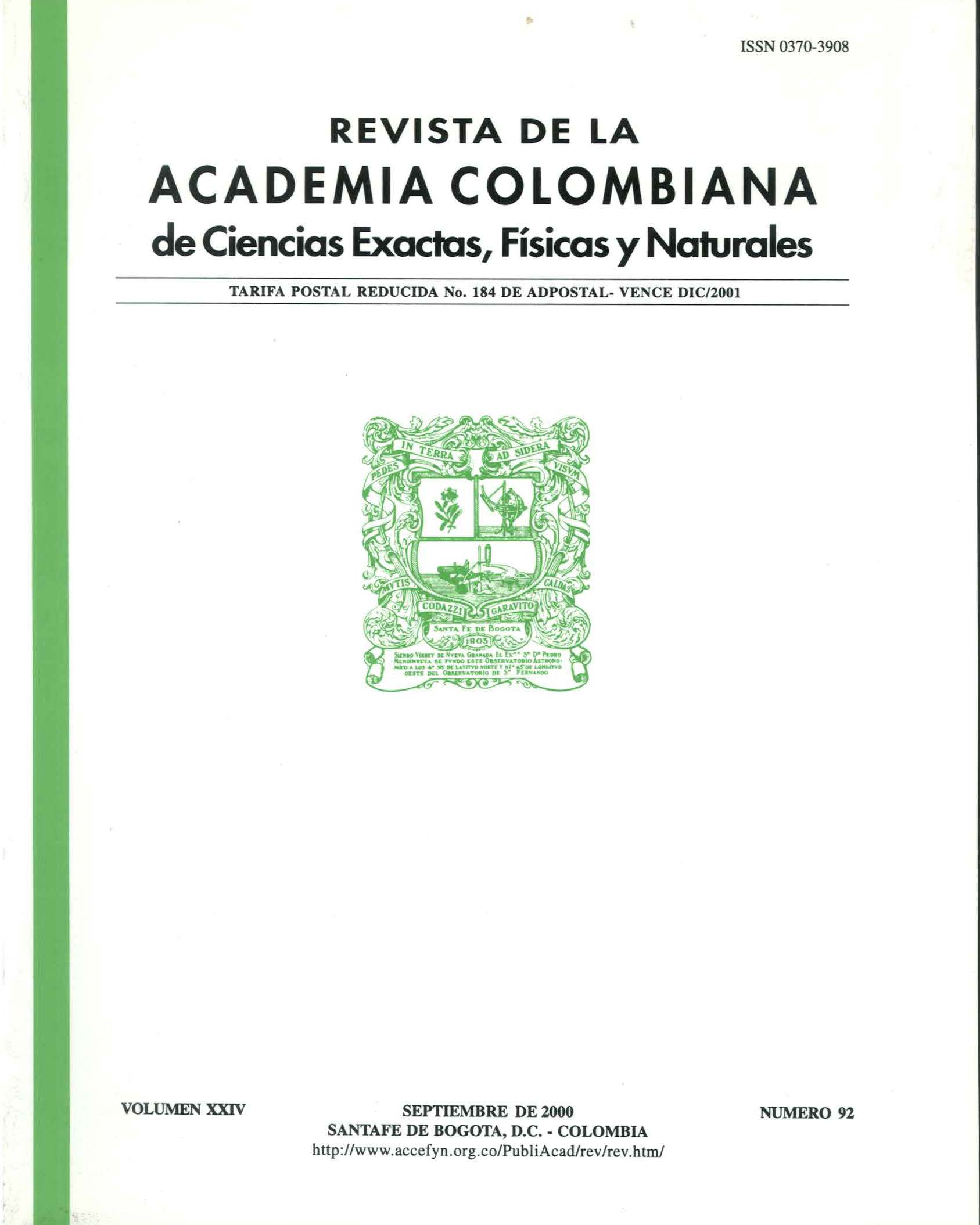Resumen
Se caracterizan y evalúan los hábitats que presentaron evidencias directas (visualizaciones) e indirectas (huellas y heces) de presencia del zorro perruno. En cada hábitat identificado se realizó un modelo de adecuabilidad (HSI) "Habitat Suitability lndex", con base en las variables de refugio, reposo y alimentación. El valor del índice para todos los hábitats analizados fue de 0.55 teniendo como valor máximo 1.00; las sabanas naturales son las que más aportan a este resultado. De acuerdo con el número de huellas, la extensión y la oferta de cada tipo de formación vegetal, no se encontró preferencia ni rechazo significativo por ningún tipo de hábitat.
Referencias
Anderson, S.B. & K.J. Gu.tzwiller. 1994. Habitat Evaluation Methods. pp: 592-606. En: T.A. Bookhout (ed): Research and Management Techniques for Wildlife and Habitats. Toe Wildlife Society. Bethesda, Maryland, Maryland, U.S.A. 740 p.
Aranda, J. 1980. Rastros de los Mamíferos Silvestres de México. Instituto Mexicano de Recursos Naturales Renovables. México D.F. 198p
Berry, K.B. 1986. lntroduction: development, testing and aplication of wildlife-habitat models. P. 3-4 In J. Verner, M. L. Morrison and C.J. Ralph (Eds). Wildlife 2000. University Wisconsin Press. Madison. U.S.A.215p.
Bisbal, F. 1979. Nicho Trófico del Zorro Cerdocyon thous. Tesis de Licenciatura en Biología. Universidad Central de Venezuela. Caracas.133p
Bisbal, F. 1982. Nuevos registros de distribución para el zorro gris (Urocyon cinereoargenteus venezuelae) (Mammalia, Camivora). Acta Científica Venezolana, 33: 255-257p.
Borrero B, José, l. & J. Bernández C. 1957. Informe preliminar sobre aves y mamíferos de Santarider, Colombia. Anales de la Sociedad de Biología de Bogotá. 7: 197-230p.
Cain, S.A. & G.M. Castro. 1959. Manual of Vegetation analysis. Harper and Row, New York. U.S.A. 436p.
Cody, M.L. 1974. Optimization in ecology. Science, 183: 156-164p.
Eisenberg, J.F. 1989. Mammal of the Neotropics. The Northem Neotropics. Volume 1 (Panamá, Colombia., Venezuela, Guyana, Suriname, French Guiana). The University of Chicago Press. Chicago U.S.A. 450p.
Emmons, L.B. 1990. Neotropical Rainforest Mammals. The University of Chicago Press. Chicago and London. Chicago U.S.A. 276p.
Gysel, L.W. & L.J. Lyon. 1987. Análisis y Evaluación del Hábitat. Pp: 321-344. En: Rodriguez, R. Tarrés(ed) Manual de Técnicas de Gestión de Vida Silvestre. 4a edición. The WidJife Society. Bethesda, Maryland U.S.A. 703p.
Lancia, R.A.; S.D. Miller & D. Adams. 1982. Validating habitat quality assessment: an example. Sabol, K (ed). Wildlife Management Institute. Washintong, D.C. U.S.A.136p.
Martínez, Y. 1996. Densidad, uso de hábitat y dieta del zorro perruno (Cerdocyon thous) en sabanas nativas de los Llanos Orientales de Colombia. Tesis de grado, departamento de Biología, facultad de Ciencias. Universidad Nacional de Colombia. Santafé de Bogotá. I 32p.
Matteocci, S & A. Colma. 1982. Metodología para el Estudio de la Vegetación. Secretaría General de la Organización de Estados Americanos, Programa Regional de Desarrollo Científico y Tecnológico. Washington, D.C. U.S.A.122p.
Montgomery, G. C. & Y.D. Lubin. 1978. Social structure an food habits of crab-cating fox (Cerdocyon thou.r) in venezuelan Llanos. Acta Científica Venezolana, 29: 382 - 383p.
Mueller-Dumbols, D. & H. Ellemberg. 1974. Aims and Methods of Vegetation Ecology. (Eds) John Wiley and sons. New York U.S.A. 345p.
Neu, C.W., C.R. Byers & J.M. Peek. 1974. A technique for analysis of utilization availability data. Journal of Wildlife Management, 38: 541-545p.
Paladines, O.M. 1992. Metodología de Pastizales para trabajar en Fincas y Proyectos de desarrollo Agropecuario. Proyecto de Fomento Ganadero PROFOGAN- MAG/G TZ. Convenio Ecuatoriano Alemán. Serie Metodológica, Manual 1: Pastos y Forrajes. Ediciones PROFOGAN. Quito, Ecuador. 166p.
Randall, B. C., R. K Steinhorst & P.R. Krausman. 1984. Clarification of a technique for analysis of utilization-availability data. Joumal of Wildlife Management 48: 1050-1053 p.
Spain, J.M. 1979. Pasture establishment in the Llanos Orientales of Colombia. In: Pasture production in acid soils of the tropics. Centro Internacional de Agricultura Tropical (CIAT). Cali, Colombia. 44p.
Sokal, R. & F. J. Rohlf, 1969. Biometría. W H. Freeman and Company. New York, 859p.
Tarrés, R.R. 1980. Manual de Ttcnicas de Gestión de Vida Silvestre. The Wildlife Society, Inc. Bethesda, Maryland. U .S.A. l 244p.
Tellería, J.L. 1986. Manual para el Censo de los Vertebrados Terrestres. Editorial Raíces. España. 455p.
Truett, J.C., H.L. Short & S.C. Williamson. 1994. Ecological impact Assessment. Pp: 507-622. En: T.A. Bookbout (Ed): Research and Management Techniques for Wildlife and Habitats. The Wildlife Society. Bethesda, Maryland. U.S.A. 1944p.
U.S. Fish and Wildlife Service. 1992. Habitat Evaluation Procedures, Workbook. National Ecology Research Center. U.S.A. 455p.
Walker, J. 1991. Mammals of the World. Second edition. The Johns Hopkins Press. New York. U.S.A. 1500p.

Esta obra está bajo una licencia internacional Creative Commons Atribución-NoComercial-SinDerivadas 4.0.
Derechos de autor 2024 Revista de la Academia Colombiana de Ciencias Exactas, Físicas y Naturales

